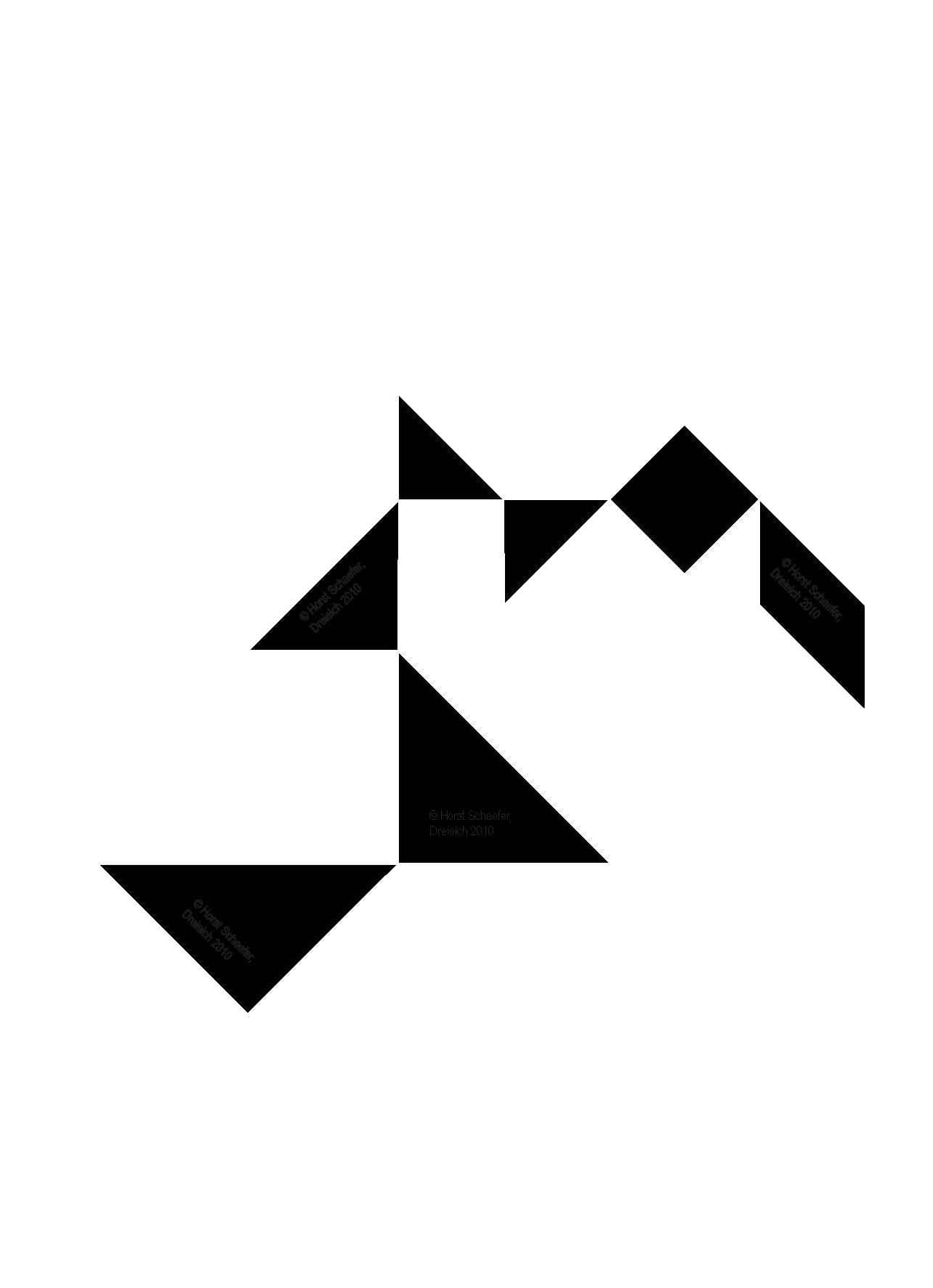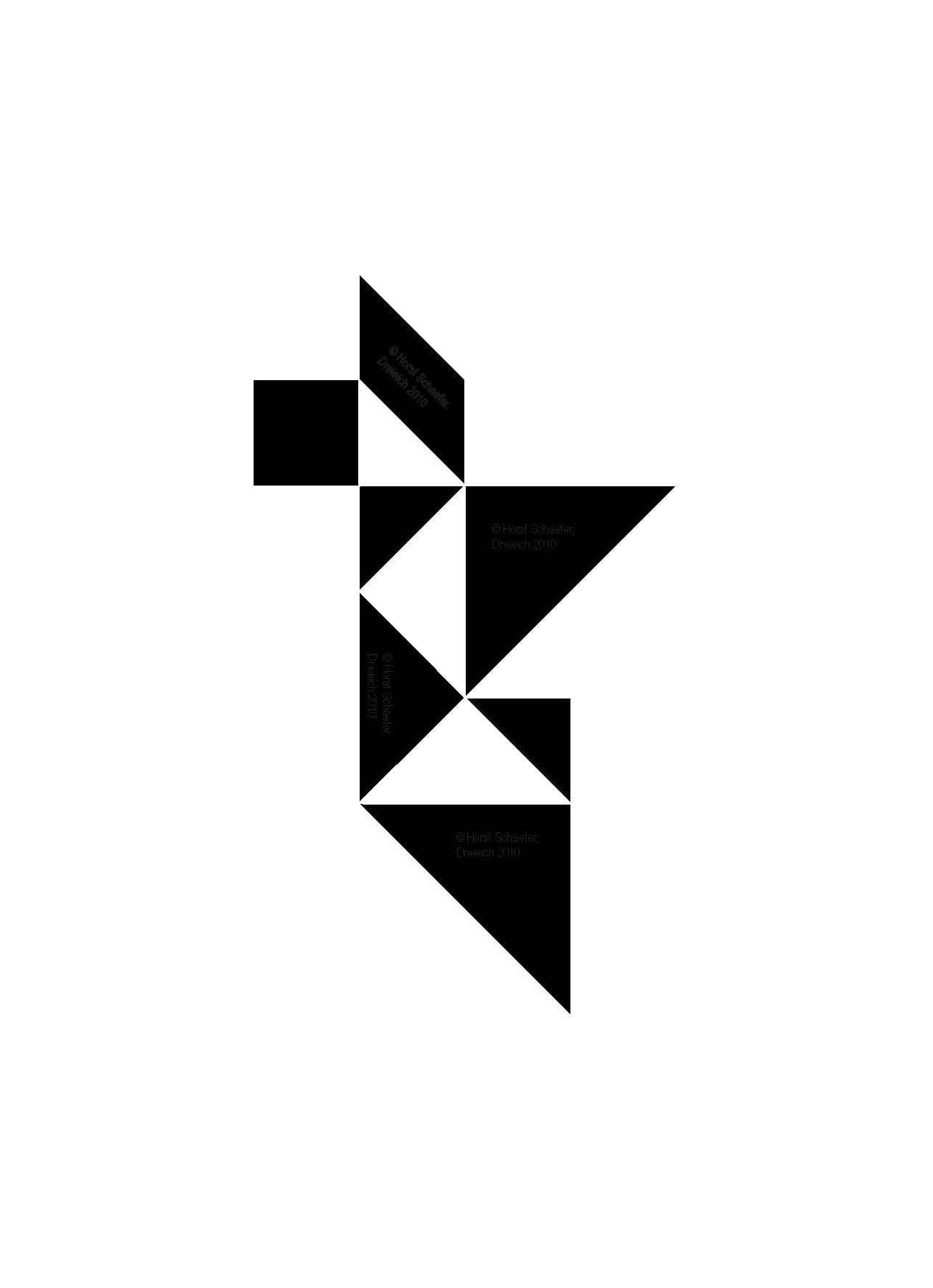Horst Schaefer
Artists
Statement
I am trying to apply formal concepts from mathematics, logic or science in my work. I also try to reach a balance between the formal aspects, artistic freedom and the resulting aesthetic value. For me it is essential, that the viewer can be aware of these aspects. As a consequence I am exploring how formal concepts generate a visual form. The name ‘Rule and Form’ of my first cycle describes this relationship.
Artworks

Rule and Form - Rule 50 - Chain, corners with an angle of 45 degree are touching corners with a right angle.
20'' x 24''
Intaglio printing on Paper
2010
The work presented is part of the cycle ‘Rule and Form’.
The cycle deals with the composition of 7 geometrical figures. The figures are derived from the Chinese Tangram by splitting a square into 7 simple figures (two large triangles, one mid-size triangle, two small triangles, a square, a parallelogram). Each work exemplifies one particular rule.
Composition principle for Series II:
Series II has the title ‘Angles and Sides’ and contains 23 works. This series relates geometrical properties like corners, angles and sides of the figures to each other.
In case of Rule 50, the 7 figures are composed in such a way that one corner of each figure is touching another figure at its corner. The rule specifies the angle at the corner. The notion of a ‘chain’ is used intuitively, without a mathematical definition. Basically it means that one figure touches at least one and at most two other figures.

Rule and Form - Rule 06 - Corner are touching each other, in the space in between iscosceles, right-angled triangles arise.
20'' x 24''
Intaglio Printing on Paper
2010
The work presented is part of the cycle ‘Rule and Form’.
The cycle deals with the composition of 7 geometrical figures. The figures are derived from the Chinese Tangram by splitting a square into 7 simple figures (two large triangles, one mid-size triangle, two small triangles, a square, a parallelogram). Each work exemplifies one particular rule. The rules use geometrical properties like corners, sides and angles. Currently 3 series are completed.
Composition principle for Series I:
Series I has the title ‘Surroundings’ and contains 19 works. The idea of this series is that the 7 figures of the Tangram surround a geometrical figure. In case of Rule 06, the 7 figures are composed in such a way that they surround three isosceles, right-angled triangles.